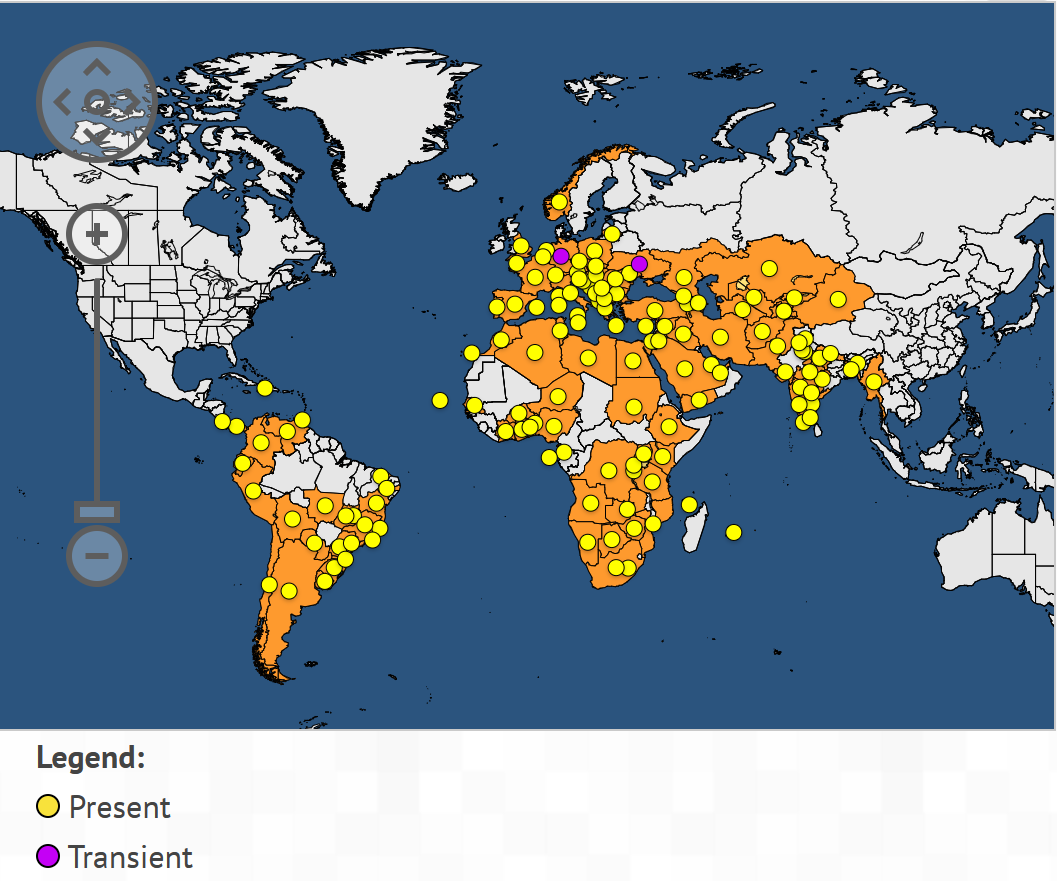Tomato leaf miner, Tuta absoluta (Meyrick) (Lepidoptera: Gelechiidae): An Invasive Insect Pest Threatening the World Tomato Production
The South American tomato pinworm or tomato leaf miner (TLM), Tuta absoluta (Meyrick) (Lepidoptera: Gelechiidae), is a serious invasive and destructive insect pest of tomato (Solanum lycopersicum L.) worldwide.
The tomato (Solanum lycopersicum L.) is an important horticultural vegetable crop that is only second to the potato. The total world production of tomatoes is about 180 million tons grown in areas of approximately 4 M ha. The top 10 tomato-producing countries in the world are China, India, the USA, Turkey, Egypt, Italy, Iran, Spain, Brazil, and Mexico. China, India, and Turkey account for almost half of the land area covered worldwide with tomato crops, that is, 31, 11, and 7%, respectively. Tomato is one of the most valuable cultivated crops in the world worth US$ 87.9 billion in 2016.
The South American tomato pinworm or tomato leaf miner (TLM), Tuta absoluta (Meyrick) (Lepidoptera: Gelechiidae), is a serious invasive and destructive insect pest of tomato (Solanum lycopersicum L.) worldwide. Furthermore, it has a wide host range and has been reported on cultivated solanaceous plants such as eggplant (Solanum melongena L.), potato (Solanum tuberosum L.), pepper (Capsicum annuum L.), tobacco (Nicotiana tabacum L.), wild solanaceous weeds like black nightshade Solanum nigrum, Solanum elaeagnifolium, Solanum puberulum, Datura stramonium, Datura ferox, Nicotiana glauca, and garden bean (Phaseolus vulgaris L.). The moth can cause 100% damage to tomato crops in both greenhouses and open fields if control measures are not carried out. Due to the high reproduction potential, dispersal ability, and tolerance to environmental conditions, T. absoluta invaded most tomato-producing countries in Europe, Africa, and Asia. The tomato leaf miner originated in the Andes region, Peru (South America) and was first introduced in Spain in 2006, thereafter, it invaded the Mediterranean Basin, Europe, the Middle East, South Asia (India), and north, east and west Africa according to Hamadttu Abdel Farag El-Shafie(2020).
The tomato leaf miner Tuta absoluta is a micro-lepidopteran insect and it threatens about 87% of production worldwide. T. absoluta intially detected in Pune, India in the year 2014, It is known by several common names as the South American tomato pinworm, the South American tomato leaf miner, the South American tomato moth, the tomato pinworm, the tomato borer, and the tomato leaf miner.
Tuta absoluta adults are silvery brown, and 5-7 mm long. The total life cycle is completed in an average of 24-38 days, except in winter months, when the cycle could be extended to more than 60 days. T. absoluta can overwinter as eggs, pupae, or adults depending on environmental conditions. Under open-field conditions, T. absoluta is usually found up to 1000 m above sea level. Moreover, about 10-12 generations may be produced annually. Damage: Tuta absoluta, usually attacks the apical buds, flowers, and new fruits of tomatoes. Larvae make conspicuous mines and galleries on leaves and stems.
Damage can occur at any stage of tomato growth from seedlings to mature plants. The larvae feed on the mesophyll tissue, leaving the epidermis intact, thus creating irregular mines and galleries on the leaves. The mines and galleries may become necrotic with time. These mining activities lead to a reduction of the photosynthetic potential of infested leaves. Infested tomatoes with T. absoluta show burnt-up-like symptoms. The galleries made by the larvae are wider than that caused by the dipteran leaf miner Liriomyza trifolii. Larvae can penetrate the axillary buds of young stems when at high density. Thus, it leads to plant withering and checks of vegetative growth. After fruit setting, the larvae excavate tunnels in the fruits, which may facilitate invasion by pathogenic agents, resulting in fruit rot. The larvae of T. absoluta have a cryptic behavior and endophagous habit, which makes detection of infestation at an early stage difficult. Damage to stems causes necrosis that reduces tomato plant growth and development. Feeding tunnels and holes in the fruits lower their quality and reduce their market value. The serious damage to tomatoes, due to T. absoluta, is caused by leaf-mining activities and to a lesser extent by tunneling in the fruits. Damage to tomatoes can reach 100% if no action is taken against the moth. Estimation of economic losses is difficult due to the interaction of many factors including climate, production pattern (greenhouse versus open field), and production costs including seeds, insecticides, fertilization, and other resources.
Economic significance
Production reduction due to injuries on leaves, stems, and fruits.
Increase in cost of management practices (IPM) against the pest, particularly the purchase and application of insecticides.
The ban or restriction of fresh tomatoes, from the side of non-invaded countries, will affect the economy of countries where T. absoluta is an endemic pest.
Other costs include the disruption of pre-existing integrated pest management (IPM) programs and the disturbance of natural ecosystems
Risk for Insecticide Resistance Development
Pests like Tuta absoluta, with high reproduction capacity and short generation cycle, are at higher risk of developing resistance to insecticides. This risk increases significantly when the management of the pest relies exclusively on chemical control with a limited number of effective insecticides available. This situation usually leads to an increase in the frequency of use and thus, increased selection pressure for resistance. T. absoluta has been a key pest in tomatoes in Latin America for decades and is resistant to a range of mode of action groups. Because of this resistance history, it is possible that introduced populations may express the same resistance profiles as found in Latin America.
Pesticide Resistance status
In Latin America, high-level and widespread resistance is known to exist in field populations of T. absoluta, mainly to organophosphates (MoA group 1B), pyrethroids (MoA group 3A), chloride channel activators (MoA group 6) and benzoylureas (MoA group 15). The resistance levels appear to be correlated with greater use of these compounds by growers and the resistance profiles seem to shift quickly with the pattern of insecticide use. The more prevalent resistance mechanisms appear to be metabolic in nature (increased activity of specific detoxification enzymes). In addition, there are suggestions that resistance may be polyfactorial and that several genes are involved. In Latin America, resistance has also developed to newer classes of insecticides introduced after the year 2000 (Silva et al. 2011).
Control and Management at Crop and Field Level
Looking at pesticide resistance status and the failure of multiple pesticide molecules to control the population of T. Absoluta, a sustainable containment strategy based on integrated pest management is recommended.
During open field trials and protected farms (greenhouse/polyhouse) in tomato crops; our BraveHawk® Series Devices have shown quite promising results. The deployment of BraveHawk Series Devices in the field resulted in keeping the damage to the crop well below the Economic Injury Level (EIL). The actual damage to crops (plants and fruits) was less than 3%.
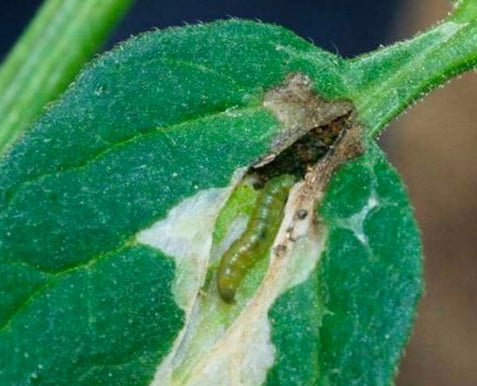


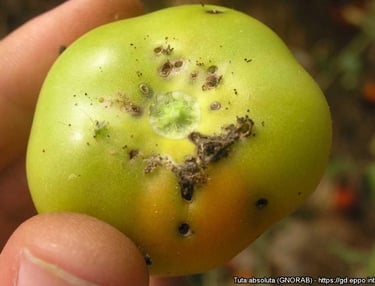



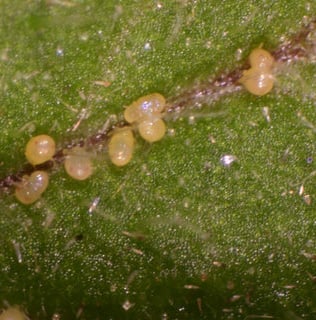
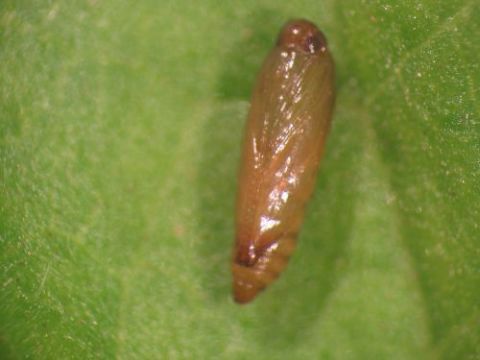

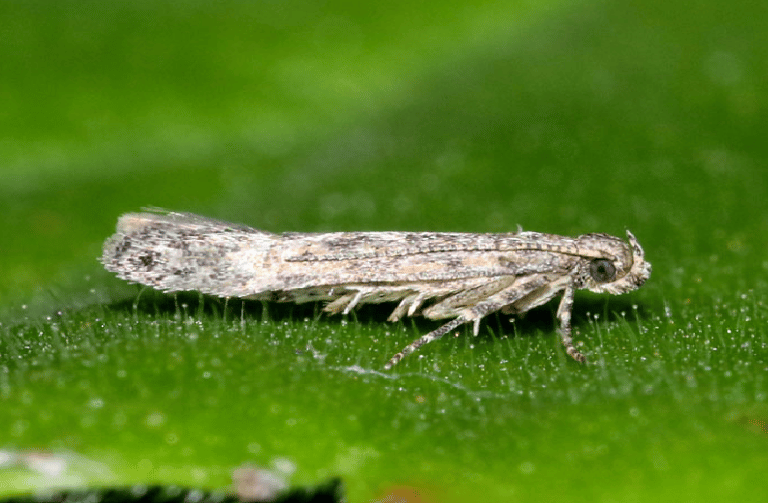

Tuta absoluta -World distribution map [Source: EPPO Global Database]
Tuta absoluta has been recorded recently (year 2017) in the Xinjiang northwestern border areas of China, now its well established in this region and could potentially spread to other regions of China.
